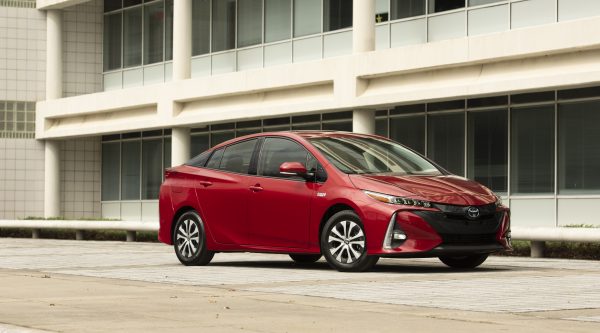Plug-in vehicles—including battery-electric cars, plug-in hybrids, and hydrogen fuel-cell cars—are nearing one in 10 new-car sales in California, according to a periodic update from industry group Veloz, referring to the latest data from the state.
Californians purchased 59,000 plug-in cars in the first quarter of 2021, accounting for more than a 9% market share for the quarter.
The Tesla Model Y was the top-selling model in the state, at 15,265, with the Tesla Model 3 second, at 14,536. The Chevrolet Bolt EV was a distant third, at 5,252 units. The highest-ranked plug-in hybrid as the Toyota Prius Prime, in fourth place, at 4,081 sales. The Model 3 is the most popular electric car in California, at more than 144,000 of them registered in the state.
During Q1, there were 3,000 public chargers (connectors) and two hydrogen fueling stations installed in California during Q1, bringing statewide totals to 74,443 chargers and 47 hydrogen stations.

2020 Toyota Prius Prime
California accounted for 45% of national plug-in car sales in Q1, and sales numbers for the state were up nearly 50% from the fourth quarter of 2020, the state-maintained data indicated. In addition to disruptions from the coronavirus pandemic, last year saw a dip in California plug-in hybrid sales while EVs and hybrids surged.
But even in California, there's a long way to go. Zero-emission vehicles make up only a bit more than 2% of the entire vehicle population, at about 636,000 out of 28 million vehicles, according to the report.
Lucid Air spotted driving through San Francisco
The distribution of vehicles is also uneven. A previous report indicated that plug-in cars are already over 10% of the market in Los Angeles and San Francisco. The United States isn't expected to hit that percentage nationally until 2025, that report said.
California has set the ambitious target of ending new internal-combustion vehicle sales by 2035. Campaigns in the state are attempting to lay the groundwork for that by promoting zero-emission vehicles to consumers beyond the early adopters that are typically most enthusiastic about them.












